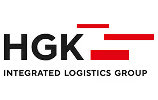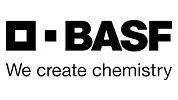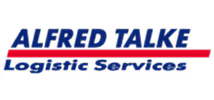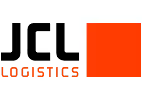Make an appointment now for an individual demo
Find out in a short demo how your company can benefit from Loady.
We'll show you which features Loady can use to support your use case.
We'll show you how to manage data, share it with business partners, or share it with shipping companies.
We are happy to answer any questions, share our best practices and provide you with an individual offer upon request.






















Write us a message
Fill out our contact form if you have an individual request and would like to receive feedback from us by email.
Ready to take the next step?
Book a demo or start for free.
Get in touch with us
Ask all questions and get an idea of the potential for logistics processes in your company.

Create your site and share data - it's free of charge!
Set up your site in just a few minutes and share your general site information directly with suppliers and logistics partners - it's free of charge.
Clear indications, fewer clarifying questions, greater efficiency!
Frequently asked questions
Loady is a platform for managing and sharing master data.
Loady has a SaaS licensing model and is based on an annual subscription. This depends on the role of tany (shipper, goods recipient, external warehouse logistics or freight forwarder) and whether the APIs are used or not.
Loady is licensed in a scalable pricing model based on the number of objects that are managed in Loady.
Loading points, products and driver instructions are chargeable. There is also a modular approach for certain functions, e.g. to support freight tenders. Depending on the setup, a start is possible within a few weeks — including training, data import and system connection.
Loady is GDPR-compliant and is based on a secure, cloud-based architecture model with:
- Roles & rights management
- Encryption
- Access logging
- Hosting in certified European data centers
- Central management of loading and unloading requirements from customers, suppliers, external warehouse logistics
- data synchronization
- Management of pre-loading restrictions for liquid and bulk goods and electronic pre-check
- Transport planning and scheduling with exact information and requirements, including geocoordinates
- Ordering and digital transfer of loading information to freight forwarders
- Multilingual, digital instruction for truck drivers (with proof required)
- Checklists for truck handling and automation
- Preparation of loading specifications for freight tenders
Loady offers standardized REST APIs and integrations for:
- ERP systems
- Transport Management Systems (TMS)
- Yard Management Systems
- e-Procurement solutions and freight platforms
- Customer portals / B2B e-commerce
- Freight forwarding software and telematics applications
Loady follows a role-based governance model and ecosystem approach:
- Site managers maintain location data.
- Loading Ramps and Road Managers Maintain Specific Requirements at Their Loading Point, including for the various products
- Product managers maintain specific requirements for transporting their products
- Manufacturing companies/shippers can manage their customers' unloading information in their own area as “business partners.”
- Customers/goods recipients can directly activate their suppliers to use their unloading information and synchronize it with them when changes are made
- External warehouse logistics operators can directly activate their customers to use their loading and unloading information and synchronize it with them when changes are made
- Carriers can receive information from their customers and provide feedback as needed, but cannot change the data themselves.
All changes are traceable, versioned and auditable.
ERP, TMS or Yard Management Systems plan or carry out transports or manage the arrival and dispatch of trucks. They are operational applications and generally do not contain complete and structured loading and unloading requirements. However, since they need them for the operations they support, they require an additional creation of master data in the respective systems.
Particularly when it comes to the unloading requirements of customers (goods recipients), shippers usually have free descriptive texts or linked PDF files that offer few digital uses (e.g. “Information for Freight Forwarders”, “Business Partner Information”, “Site Rules and Directions”). In addition, this information is only available within the respective application and is generally handled by companies as a separate, proprietary data silo, which poses the major challenge of reactively and manually following up on updates to the data.
Loady fills exactly this gap by providing a central, standardized data source that can be used by all systems via interfaces and thus provides targeted support to various users throughout the logistics process.
- Location and ramp data: address, geographical coordinates, opening hours and closing days, safety requirements, vehicle restrictions, registration and procedures, existing infrastructure for drivers)
- Equipment requirements (hoses, couplings, cleanings, load securing, etc.)
- Admission requirements (e.g. PPE, training, documents, qualification requirements)
- Loading behavior and loading options (e.g. top/bottom loading)
- Specific product information (temperature, safety data sheet, restrictions on previously loaded products)
- Multilingual driver instructions
Loady is a central, cloud-based data hub for loading and unloading requirements along the transport chain. It provides standardized information on how to load or unload certain products at industrial sites.
It answers questions like: What are the openning hours and closing days? What technical equipment is provided - and what needs to be brought by the carrier? What are the safety instructions and what personal protective equipment is needed? What does the driver need to know to manage himself at the site? Is slot booking required and if so: who needs to book the slot and how? - etc.
The collaborative approach of Loady makes it possible to share data from a single source of truth. So the parties involved in a transport use the same data set and get any updates directly in their systems: suppliers (shippers), their customers (consignees) and freight forwarders, including their subcontractors and drivers.



